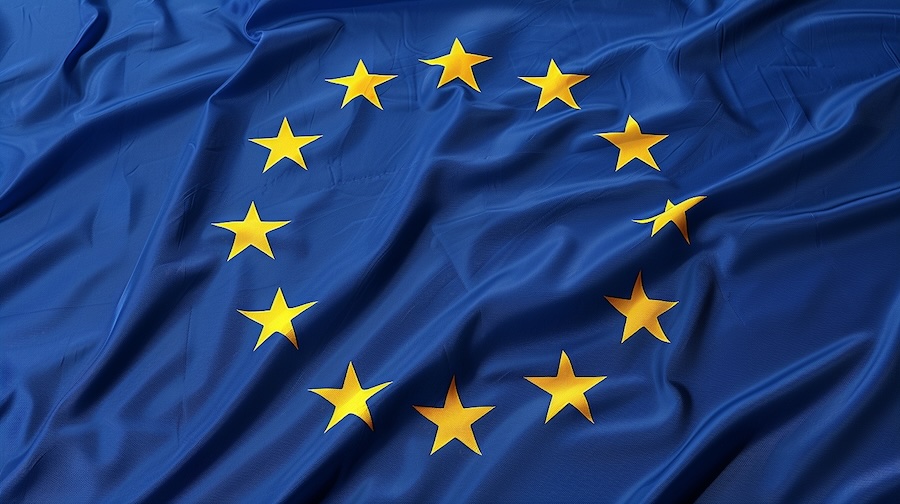Welcome to “KA1 Projects Preparation: A Beginner’s Guide to Your Project”! Here, we will walk you through the crucial steps of initiating a KA1 project. Whether you are a newcomer in the field or someone seeking to refine your project planning skills, this guide will be your key to understanding the essentials of preparing for a KA1 project. Also, check our category of Erasmus+ Projects to reach more posts related with the subject. We also have an Udemy Course on how to write KA1 Projects, which you may be interested in. Above all, by understanding the preparation process, you’ll be in a better position to create, manage, and achieve successful project outcomes. So, let’s dive in and learn how to effectively initiate your KA1 project! Use our template here to conclude your preparation before the writing process.
KA1 Projects Preparation: How to Create a Project Idea?
When you embark on creating an Erasmus+ KA1 project, the initial step lies in forming a compelling project idea. Firstly, this process begins with brainstorming. Secondly, endeavour to identify a problem or need within your community or field that aligns with the priorities of Erasmus+ KA1. Thirdly, deeply reflect on this problem and develop a unique, innovative solution that could be executed through the project. And finally, ensure your idea stands out by infusing elements of creativity, sustainability, and European values.
The EU values are common to the EU countries in a society in which inclusion, tolerance, justice, solidarity and non-discrimination prevail. These values are an integral part of our European way of life:
Human dignity
Human dignity is inviolable. It must be respected, protected and constitutes the real basis of fundamental rights.Freedom
Freedom of movement gives citizens the right to move and reside freely within the Union. Individual freedoms such as respect for private life, freedom of thought, religion, assembly, expression and information are protected by the EU Charter of Fundamental Rights.Democracy
The functioning of the EU is founded on representative democracy. Being a European citizen also means enjoying political rights. Every adult EU citizen has the right to stand as a candidate and to vote in elections to the European Parliament. EU citizens have the right to stand as candidate and to vote in their country of residence, or in their country of origin.Equality
Equality is about equal rights for all citizens before the law. The principle of equality between women and men underpins all European policies and is the basis for European integration. It applies in all areas. The principle of equal pay for equal work became part of the Treaty of Rome in 1957. Although inequalities still exist, the EU has made significant progress.Rule of law
The EU is based on the rule of law. Everything the EU does is founded on treaties, voluntarily and democratically agreed by its EU countries. Law and justice are upheld by an independent judiciary. The EU countries gave final jurisdiction to the European Court of Justice which judgements have to be respected by all.Human rights
EU Website
Human rights are protected by the EU Charter of Fundamental Rights. These cover the right to be free from discrimination on the basis of sex, racial or ethnic origin, religion or belief, disability, age or sexual orientation, the right to the protection of your personal data, and or the right to get access to justice
How to Conduct Research Related to Your Idea
How to Explain Definitions and Terminology
Basically, in the realm of research, clear communication is vital. When explaining definitions and terminology, aim for clarity and conciseness. Ensure that these definitions are simple for your audience to understand. But, use everyday language where possible, and always provide context to make the terms relevant to your idea.
KA1 Projects Preparation: How to Use Statistics and Citations
Statistical data and citations bring strength and credibility to your project. When leveraging statistics, remember to use reliable and recent data sources. Present this information in an easily understandable format and explain its relevance to your project. Besides, always cite your sources to avoid plagiarism and build trust with your audience.
An Analysis of the Current Situation, How to Take a Picture of It?
To fully understand your project’s potential impact, it’s essential to analyse the current situation. Begin by identifying the problem your project will address. Research the extent of the problem and the populations affected. Substantiate your findings with quantitative and qualitative data. The result will be a comprehensive snapshot of the situation that sets the stage for your proposed solution.
Priorities
KA1 Projects Preparation: Program Priorities
Use 2023 Erasmus+ Programme Guide (Page: 6 to 12) to understand the Program Objectives and Priorities, and also important features. If you do not consider them while writing your project it is not possible to get the grant.
KA1 Projects Preparation: KA1 Priorities
The priorities of the Erasmus+ KA1 programme guide the projects that receive funding. These priorities include promoting social inclusion and diversity, combating discrimination and promoting entrepreneurial skills and creativity. Other preferences are fostering the development of social, civic, and intercultural competencies and critical thinking and improving and expanding the cooperation between organisations that offer to learn mobility opportunities.
OBJECTIVES OF THE ACTION
The Erasmus Accreditation in the field of youth action has the following objectives:2023 Erasmus+ Programme Guide (Page: 135)
- Strengthen personal and professional development of young people through non formal and informal learning
mobility activities;- Foster the empowerment of young people, their active citizenship and participation in democratic life;
- Foster quality development of youth work at local, regional, national, European and international level by
building capacity of organisations active in the youth field and supporting the professional development of youth
workers;- Promote inclusion and diversity, intercultural dialogue and the values of solidarity, equal opportunities and human
rights among young people in Europe
How to Explain Which Activities in Your Project Cover These Priorities
Clearly articulating how your project’s activities align with Erasmus+ KA1 priorities is paramount. Break down each activity in your project and explain how it contributes to one or more priorities. Be specific in demonstrating each activity’s intended outcomes and benefits and draw a clear link to the corresponding priority.
How to Select Primary and Secondary Target Groups
Basically, your target groups are the individuals or organisations your project aims to impact. To identify your primary and secondary target groups, consider the problem your project addresses. Who is most affected by this problem? These individuals or organisations are likely your primary target group. Your secondary target group may include those indirectly affected by the situation or those who could influence its resolution. Remember to tailor your project’s approach to meet these groups’ specific needs and preferences.
Deciding Aim and Goals
When embarking on an Erasmus+ KA1 Project, a precise aim and defined goals provide the compass to guide your journey. Setting the purpose requires understanding what you want to achieve through the project. It could be enhancing student learning, promoting cultural exchange or fostering professional development. Subsequently, the goals are the measurable steps towards fulfilling this aim. They are distinct milestones which provide a roadmap for project progression. From a strategic perspective, goals should be SMART – Specific, Measurable, Achievable, Relevant, and Time-bound.
KA1 Projects Preparation: Planning Activities
For project activities, a well-defined plan forms the crux of your endeavour. The actions should align with the aim and goals of your project, offering a practical means to attain the desired results. Start by brainstorming potential activities that will contribute to your project’s success. Remember, these activities must be comprehensive and include everything from the preparatory phase to the follow-up phase. Once you have a list, prioritise them based on their potential impact and feasibility. Finally, create a project timeline to visualise and monitor the execution of these activities.
Selecting Partners
KA1 Projects Preparation: Relativeness of the Partners (Vital)
Partnerships form the backbone of any successful Erasmus+ KA1 Project. Choosing the right partners is crucial and must be done with due diligence. Partners should bring the necessary skills and resources and share a common interest in achieving the project’s aim and goals. Ensure your chosen partners’ ethos and objectives align with yours. Further, consider the partners’ past performance and willingness to commit to the project. A compatible partner can be a difference-maker for your project, thus making this selection process vital.
Creating an Activity Table and Budget
Once the partners are selected, and activities are planned, creating an Activity Table and a Budget is the next step. An Activity Table provides an overview of all planned actions and their timing. This table visually represents what needs to be done, by whom, and by when. It supports coordination, tracks progress, and helps manage risks.
On the other hand, the Budget maps out the financial blueprint for your project. It must cover all costs associated with the project, from staffing and training to materials and travel. Precise budgeting is crucial to financial management, ensuring you have the funds needed to complete the project without overspending.
Deciding Results/Outputs/Outcomes for Each Activity
The next focus is determining the Results/Outputs/Outcomes for each activity. It means identifying what tangible or intangible changes or products should emerge from each of your project’s activities. Ensuring these outcomes are realistic and achievable is crucial, directly contributing to your project’s overall aim and goals. It’s often helpful to employ the SMART criteria here, ensuring each output is Specific, Measurable, Achievable, Relevant, and Time-bound.
Indicators of Success for Each Result
Once your desired results are outlined, you’ll need to set indicators of success. These are measurable factors that demonstrate progress towards each of your project’s intended outcomes. They should be directly related to the output and provide clear evidence that the output has been achieved. These indicators form a critical part of monitoring and evaluation, helping you to keep the project on track and assess its success upon completion.
Assessing the Impact of the Project
KA1 Projects Preparation: Identifying Project Impact
To fully appreciate the scope of your Erasmus+ KA1 Project, it’s vital to understand its impact. Unravelling the effect of your project is about more than just numbers but also the qualitative changes it brings about.
Analysis and Evaluation
Use a multifaceted approach to evaluate the impact. Firstly, consider how the project has influenced the participants and organisations involved. Have their skills or capacities improved? Has it opened up new avenues of cooperation and understanding? Moreover, consider the broader societal implications. Has your project contributed to local or global issues or led to meaningful shifts in attitudes or behaviours?
Concluding Your Project
Wrapping up Your Project
Drawing your Erasmus+ KA1 project to a close is as crucial as its commencement. A thoughtful conclusion is a definitive stamp, tying up loose ends and providing a comprehensive project overview.
KA1 Projects Preparation: Lessons Learned and Future Prospects
Reflect on the project’s triumphs and setbacks. What lessons were gleaned? How can these lessons inform future endeavours? Ponder the potential for continuity or expansion. Could your project be the springboard for additional initiatives or partnerships? By contemplating these elements, you’ll conclude your project and set the stage for future undertakings.
In summary, understanding and concluding your project’s impact are essential steps in Erasmus+ KA1 project writing. Certainly, they ensure your project is meaningful and provides a platform for future growth and collaboration.
Conclusion
In conclusion, you can learn a lot from our how-to-write KA1 Projects Udemy Course. But, you do not need to buy this course if you are a fewer opportunity young people, you can contact us to get it for free.
As a summary, by doing preparation before writing your project will help a lot in the proposal stage. Moreover, this document will help you as a sidekick in that process
Also, please follow our social media















